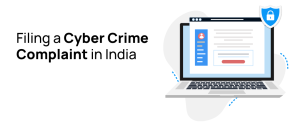
Unmasking the Machine: Unveiling the Technical Nuances of AI-Generated Images
The Art of Deception: Unveiling the Secrets of AI-Generated Images
By: Javid Amin
In the age of digital alchemy, where pixels morph into faces and algorithms sculpt realities, discerning the real from the fabricated has become more crucial than ever. While AI-generated images offer artistic expression and innovative possibilities, they also blur the lines between truth and falsehood, raising concerns about misinformation and authenticity. For the astute observer, however, there are secrets hidden within these digital tapestries, whispers of their artificial origins waiting to be heard. So, how do we crack the code of these synthetic creations and unmask the true face beneath the pixels?
Anatomy of an AI-Generated Image:
Understanding the limitations and strengths of AI image generation is the first step in demystifying their secrets. These systems, trained on vast datasets of real photographs, learn to mimic visual patterns and textures. However, their fluency in replicating the surface often masks a shallow understanding of the intricate details that breathe life into human existence.
The Telltale Flaws:
Let’s delve deeper into the specific areas where AI tends to stumble, leaving behind telltale fingerprints in its wake:
1. The Uncanny Valley of Features:
- Eyes: These windows to the soul are a frequent AI stumbling block. Look for inconsistencies in size, shape, and pupil positioning. Do they lack natural reflections or have unnervingly perfect irises? Are the eyelashes too uniform or defying the laws of physics?
- Skin and Hair: The texture of life is often missing in AI creations. Be wary of overly smooth, plastic-like skin that lacks blemishes or pores. Hair can also be a giveaway, with unnatural highlights or clumped strands devoid of individual characteristics.
- Teeth and Ears: These intricate details often reveal the seams of AI’s artistry. Look for unrealistic teeth shapes, unnatural spacing, or missing details like gum lines. Ears can be misshapen or lack the subtle folds and cartilage formations that mark human biology.
- Body Parts: Hands, with their complex articulations and subtle imperfections, are frequent AI pitfalls. Watch out for missing joints, unnatural proportions, or fingers merging unnaturally. Feet and other appendages can also betray the digital brushstrokes, appearing stiff and lacking in natural movement.
2. The Unnatural World:
- Lighting and Shadows: Shadows that defy the light source, impossible angles of illumination, and inconsistent or abrupt transitions can reveal the hand of an AI manipulator.
- Backgrounds: Stock images or unrealistic environments that clash with the subject’s attire or context may be red flags. Glitches, repeating patterns, or blurry details in the background can also point towards synthetic origins.
- Composition and Context: Does the image feel staged or lack a natural flow? Are there inconsistencies in perspective or awkward juxtapositions of objects? Look for clothing or attire that defies the setting or inconsistencies in the overall narrative of the image.
3. The Uncanny Valley of Expressions:
- Smiling Faces: The Mona Lisa of AI challenges is the enigmatic smile. Be wary of overly symmetrical or unnaturally wide grins that lack the subtle nuances of human expression. Look for eyes that don’t crinkle at the corners or forced smiles that don’t reach the eyes.
- Unnatural Poses and Gestures: The human body moves in unique ways. Look for awkward, stiff postures or poses that defy gravity. Gestures that appear unnatural or out of place can be a sign of AI choreography.
- Missing the Sparkle of Life: The spark of intelligence and emotion that shines through the eyes of real people is often absent in AI-generated faces. The gaze can be vacant or unfocused, lacking the depth and intensity that reflects a living, breathing soul.
Beyond the Pixel Peep:
While visual clues are crucial, there are other tools in the investigator’s arsenal:
- Reverse Image Search: Upload the image to search engines to see if it appears elsewhere or has been identified as AI-generated.
- Specialized Websites and Tools: Resources like “WhichFaceIsReal” and “IsThisPersonReal” utilize AI to analyze images and provide assessments of their humanness.
- Staying Informed: Keep your finger on the pulse of the ever-evolving world of AI image generation. New techniques and limitations emerge constantly, so ongoing awareness is key.
The Importance of Awareness:
In a world saturated with images, discerning the real from the fabricated is not just a game of intellectual acrobatics; it’s a vital skill in navigating the digital landscape. AI-generated images have the potential to be misused for misinformation, propaganda, and even deepfakes that can erode trust and distort reality. By equipping ourselves with the tools and knowledge to decipher these creations, we can become active participants in shaping a digital future where authenticity reigns supreme.
Remember: No single clue is definitive; trust your intuition and consider a combination of factors.

